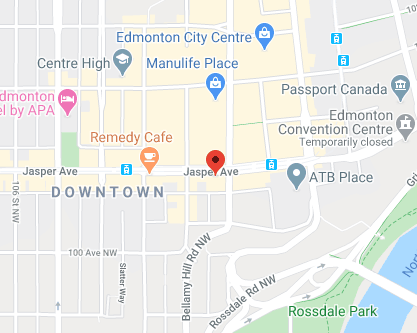DNA testing
DNA testing
Immigration, Refugees and Citizenship Canada (IRCC) accepts DNA test results only from laboratories accredited by the Standards Council of Canada (SCC) as evidence of a genetic link between a parent and a child, between siblings, or other familial relationships.
IRCC may offer DNA testing when documentary evidence is lacking or the authenticity of a claimed genetic relationship is in doubt, but only as a last resort. IRCC must justify the need for testing, clarify that it is voluntary, and explain the concerns about the relationship. DNA sample collection involves a non-invasive saliva sample, which is sent to an accredited lab for genetic comparison.
On this page
- Who to test
- Issuing a DNA letter
- Testing within Canada
- Testing outside Canada
- Overseas virtual DNA collection
- Receiving DNA test results from Laboratory
- Recording DNA test and results in GCMS
- Reviewing DNA test results
Who to test
An applicant may be given the option of undergoing DNA testing in cases in which documentary evidence has been examined and there are still doubts about the authenticity of a parent-child genetic relationship (where it has been claimed) or when it is not possible to obtain satisfactory relationship documents.
Officers should explore other ways to establish parental links, such as issuing a procedural fairness letter, conducting an interview, or verifying an existing legal parent-child relationship before resorting to DNA testing. They must be satisfied, on a balance of probabilities (over 50%), that a biological parent-child relationship exists and document any concerns if the client's response is unsatisfactory.
For citizenship
For citizenship purposes, it is only necessary to establish 1 parent-child relationship with a Canadian citizen parent.
DNA tests to establish a parent-child relationship must involve samples of genetic material from the Canadian parent and from the child or children. If the Canadian parent is deceased, officers could request samples from the deceased parent’s relatives.
For immigration
For immigration purposes, DNA tests may be used to establish a genetic relationship between a parent and child, or other kinship relationships. DNA testing for the purpose of establishing a parent-child relationship must involve samples of genetic material from both parents and from the child or children. In cases where both parents are not available, exceptions will be made.
When testing DNA to establish a genetic relationship between 2 individuals for immigration purposes, having the DNA of an additional relative or family member can be useful to establish the claimed genetic relationship, even if that additional relative or family member is not specifically involved with the sponsorship application. In such cases, the processing office needs to be satisfied that the person is a blood relative of the sponsor, and that the person’s DNA sample is collected in accordance with these guidelines.
DNA test to establish a parent-child relationship
Who to test:
- the child
- both the mother and the father
Where applicable, the laboratory will require a DNA sample from both the mother and the father. By having both parents participating, the full genetic portrait of the child will be obtained. For example, if the alleged father is the sponsor and a paternity report is requested, the DNA laboratory automatically requests the client also obtain a sample from the mother. While conducting the paternity test, the DNA laboratory determines if the alleged mother is excluded or not and will issue a covering letter advising of any negative relationship results between the alleged mother and any of the children.
DNA test for kinship
Who to test:
- the siblings (full or half-siblings)
- the parents (or, if the parents are deceased, the parents’ siblings)
If the alleged parents of the siblings are deceased, it is useful to have samples from the parents’ relatives. If they are available to be tested, the DNA testing laboratory may request samples from the parents’ relatives to determine the sibling relationship, and IRCC should collect these.
Issuing a DNA letter
IRCC will issue a DNA letter to the client informing them of the option to provide DNA test results.
The client will then contact an SCC-accredited laboratory directly and provide them with a copy of the DNA letter.
The DNA letter informs the client of the following:
- the decision to undergo a DNA test is entirely their own
- the familial tie that is being proven
- the number of days (30/45/60, etc.) to undergo DNA testing
- they will have to cover all costs related to the DNA test, regardless of the result (that is, all costs including sample-taking, courier costs for shipping, the laboratory analysis of all DNA samples and the final report submitted directly from the laboratory to IRCC and the client)
- IRCC only recognizes DNA test results from laboratories accredited by the SCC
- It is the client’s responsibility to choose one of these laboratories
- Tests from laboratories that are not SCC-accredited will not be accepted
- the client must provide 2 passport photos and 2 pieces of valid identification documents to establish their identity, 1 of which must be a government-issued photo ID
- the client must sign a release and consent form (provided by the laboratory) so that the laboratory may send the test results to IRCC
- the government assumes no responsibility for the results of the DNA analysis
- the client is to inform IRCC should they decide not to undergo a DNA test
- should IRCC not receive a response from the client and not receive results of the DNA testing, the officer will render a decision based on the information available on the application
Testing within Canada
The client will select and contact the laboratory directly and provide them with a copy of the DNA letter from IRCC.
The laboratory chosen by the client will arrange an appointment to collect a DNA sample.
The sample collection must be administered by an SCC-accredited laboratory.
At the time of the DNA sample collection, clients must provide the following:
- the original letter sent by IRCC
- 2 passport photos, in accordance with IRCC specifications, which must be included in the documentation shipped with the DNA sample
- 2 pieces of valid identification documents to establish their identity, 1 of which must be a government-issued photo ID
- Note:The laboratory staff will make a photocopy of the identity documents, as a photocopy must be included in the package shipped with the DNA sample
- a signed release and consent form provided by the laboratory, authorizing them to send the DNA test results and photocopies of the identity documents to IRCC
Requirements for the collection and shipment of samples
The SCC-accredited laboratory must ensure the integrity of the DNA testing and shipment procedures. At the time the DNA sample is collected, a representative for the laboratory will ask for the necessary documentation from the client and will do the following:
- verify the identity of the person providing the DNA sample
- ensure identity documents appear genuine and do not appear to have been tampered with
- make a photocopy of the client’s 2 pieces of identification
- ensure the release and consent form is signed by the client
- match the identification provided at the time of the DNA sample collection with the client’s information provided in the DNA letter or other material issued by IRCC
- verify that the DNA sample kit has not been tampered with
- collect the DNA sample according to the instructions included in the DNA sample kit
- complete the chain of custody document for the DNA sample which is provided by the laboratory
- The chain of custody record must identify the full name of the employee who collected and packaged the DNA sample, as well as the legal name of the sample collection facility
- package the DNA sample and documentation according to the instructions included in the DNA sample kit
- send the package directly to the laboratory conducting the DNA test by the fastest, most reliable means possible
- Ideally, no more than 7 days should elapse between the collection of the DNA sample and receipt of the package by the laboratory
Testing outside Canada
For citizenship purposes
Client and Canadian parent living outside Canada (excluding the U.S.)
CPC-S sends the DNA letter to the consular office abroad and includes:
- client’s contact information, photo, personal information
- Canadian parent’s proof of citizenship
The consular office sends the letter to the client, or, if the client is a minor, to the parent.
Client outside Canada, Canadian parent in Canada
CPC-S sends the DNA letter directly to the client overseas, copies the consular office and includes:
- client’s contact information, photo, personal information
- Canadian parent’s proof of citizenship
If the client is a minor, then CPC-S sends the letter to the parent in Canada and copies the consular office.
Consular and migration offices in the same city
Consular officer refers the case for DNA collection to the migration office and:
- provides client’s contact information, photo, personal information
- provides Canadian parent’s proof of citizenship
- laboratory and migration office schedule the test with the client.
Consular and migration offices in different cities
Consular officer contacts the manager of the relevant migration office and:
- provides client’s contact information, photo, personal information
- provides Canadian parent’s proof of citizenship
- laboratory and migration office schedule the test with the client
Client in the U.S.
- CPC-S sends the DNA letter and documents directly to the client or the Canadian parent (if the client is a minor).
DNA sample kit
- The chosen laboratory sends a tamper-proof DNA sample kit to the migration office
- The kit includes everything needed for sample collection, packaging, and shipping, along with instructions for witnessing the sample collection
For immigration purposes
The laboratory chosen by the client will send a tamper-proof DNA sample kit (including instructions) to the migration office. The DNA sample kit contains everything necessary to collect package and ship a DNA sample, including instructions regarding witnessing the sample collection. The migration office will schedule the client for an appointment to complete the DNA testing on site.
DNA sample collection for citizenship and immigration purposes
At the time of the DNA sample collection, clients must provide the following:
- the original letter sent by IRCC
- 2 passport photos, in accordance with IRCC specifications, which must be included in the documentation shipped with the DNA sample
- 2 pieces of valid identification documents to establish their identity, 1 of which must be a government-issued photo ID
- Note: The laboratory staff will make a photocopy of the identity documents, as a photocopy must be included in the package shipped with the DNA sample.
- a signed release and consent form provided by the laboratory, authorizing them to send the DNA test results and photocopies of the identity documents to IRCC
Ensuring the integrity of DNA testing procedures
A migration officer or migration office staff member must be present when the DNA sample is collected for immigration purposes, and must do the following:
- Verify identity: ensure the persons providing the DNA sample are identified in the DNA letter and in the identification provided at the time of the sample collection
- Check for kit tampering: verify that the DNA sample kit has not been tampered with and complete the chain of custody documents for the DNA sample (or witness their completion)
- Prepare package to be shipped: package the DNA sample and documentation according to the instructions included in the DNA sample kit
- Ship package: send the package to the laboratory by the fastest, most reliable means possible. Ideally, no more than 7 days should elapse between the collection of the DNA sample and receipt of the package by the laboratory. Private courier services, paid for by the client, can normally deliver samples within this timeframe.
Overseas virtual DNA collection
IRCC is offering a DNA collection process at select International Organization for Migration (IOM) offices. This process is virtually witnessed by a migration office staff member and is used for both immigration and citizenship lines of business.
Distribution of testing kits to IOM offices
The IRCC migration office contacts and distributes testing kits to the appropriate IOM offices, and confirms the platform for virtual witnessing (for example, MS Teams). The IOM office contacts the client to inform them of the date and venue for the DNA sample collection.
The client will be required to bring the following to their appointment at the IOM:
- the original letter sent by IRCC
- 2 passport photos, in accordance with IRCC specifications, which must be included in the documentation shipped with the DNA sample
- 2 pieces of valid identification documents to establish their identity, 1 of which must be a government-issued photo ID.
- Note:The laboratory staff will make a photocopy of the identity documents, as a photocopy must be included in the package shipped with the DNA sample
- a signed release and consent form provided by the laboratory, authorizing them to send the DNA test results and photocopies of the identity documents to IRCC
Virtual witnessing
The migration office staff will:
- connect with the IOM DNA team via MS Teams
- verify the identities of individuals providing DNA samples via video to ensure they match those identified on the application
- ensure the DNA sample kit is intact and has not been tampered with
- observe the collection and packaging of the DNA sample and oversee the completion of the chain of custody documents
- The IOM staff notes "witnessed via videoconference" on the form
- record the following statement in GCMS:
“DNA collection at IOM [Location] was witnessed virtually on [Date] following established procedures. This included confirming client ID, witnessing the completion of the chain of custody documents, and overseeing the packaging and documentation of the DNA sample as per the instructions in the DNA kit.”
Receiving DNA test results from laboratory
The laboratory must conduct the DNA test as soon as all samples and necessary documentation have been submitted. The results must be sent directly from the laboratory that conducted the DNA test to the client and the appropriate IRCC office, preferably via mail or courier.
Delivering DNA test results by email carries the risk of unauthorized access by third parties. Should a laboratory choose to communicate DNA test results by email, it must ensure the transmission of information is done in a secure manner.
Note: The laboratory is solely responsible for the protection of clients’ personal information and assumes all liability for:
- privacy or security breaches
- negligence
- any other liability that may result from the handling of such information via email
Requirements for laboratories delivering test results by email
If a laboratory intends to deliver test results by email, it must inform the client through the release and consent form and outline the specific risks. The laboratory must agree to provide IRCC with satisfactory proof of a signed release and consent at the time it delivers the DNA test results to IRCC.
Laboratories must also implement appropriate measures to protect clients’ personal information. An example of ensuring the transmission of information is done in a secure manner may include sending the test results through a 2-step process: in a password-protected email, with the password sent in a separate email.
The laboratory will promptly advise IRCC if it changes the existing measures or implements new measures to deliver DNA test results and protect clients’ personal information.
The Government of Canada is not responsible for any of the following:
- losses or damages incurred due to unauthorized third-party access to the DNA test results
- misuse of the results or other personal information
- issues related to the mode of communication used to disseminate DNA test results, including:
- restrictions
- delay
- malfunction
- any other issues
Valid test results
Test results will only be accepted from laboratories that have valid accreditation from the SCC. IRCC does not recognize DNA test results where the records indicate that a suspended or unaccredited laboratory was involved in any part of the DNA testing process, including, but not limited to, the following:
- sample collection
- sample storage
- sample packaging
- sample extraction
- sample analysis
- reporting of DNA test results
Results interpretation
Genetic test results must have an accuracy of 99.8% or higher. Test results below these levels are not acceptable as proof of relationship.
If client does not sign release or consent form or withdraws
The laboratory will write to IRCC to say that the information cannot be released. In such cases, officers are required to make a decision on the application based on the information on file.
Recording DNA test and results in GCMS
Create a testing activity
Under the Events tab create a testing activity to document the DNA request. (Note: Given the inability to record the DNA test results within the GCMS event activity, a separate verification activity must be created to track the results).
Create a verification activity
Navigate to the Other Reqs tab and create a new verification activity. When uploading the document, officers should populate the following fields:
- Type: Eligibility
- Sub Type: Proof of Relationship
- Document Name: DNA Test
- Insert Country of Issue (where the DNA test is likely to occur – if not known, put the client’s CoR)
Note: if entering multiple verifications on an application for multiple DNA tests (for different children, for example), you may need to differentiate DNA test documents by entering a different issue date for each document.
Once results have been received, officers should update the verification activity fields:
- Method: Event
- Other Contact: Enter DNA Test Provider Name (for example, Wyndham Forensic Group Inc.)
- Contact Response: Confirmed Valid/Fraudulent
- Verification Result: No Adverse/Adverse
- Note: if the clients did not comply with the DNA request, one cannot select non-compliant. Rather, it is necessary to simply cancel the verification activity line; non-compliance will need to be recorded on the test event
Once complete, the status of the verification activity is updated to “Completed”.
Note: if the clients did not comply with DNA testing or if they are not required, the status of the verification activity must be updated to cancelled.
Reviewing DNA test results
Positive DNA test result
Officers are to include the positive DNA test result in the client's file as substantial evidence supporting their relationship claim and consider it alongside all other submitted documentation.
Negative DNA test result
Officers must clearly document the negative DNA result and may consider it alongside all other submitted documentation to determine whether there remains insufficient evidence of a genetic relationship.
They must also ensure the client is informed of all the reasons the evidence was insufficient.
To ensure procedural fairness, a procedural fairness letter should be sent to the client advising them of the concerns before rendering a final decision.
Client elects not to proceed with a DNA test or fails to respond to a DNA request
DNA testing is not mandatory, an application should not be refused if a client elects not to proceed with DNA testing. Officers are to continue to analyze the application based on the documentation provided and use the existing documentary evidence to make a decision on the application.
Officers may refuse an application for having insufficient evidence of a genetic relationship, for which the client's decision to refuse a DNA test can be used as part of the record. However, officers should not rely on this factor alone in their assessment and failure to submit to a DNA test should not be taken as evidence of non-compliance.
To ensure procedural fairness, a procedural fairness letter should be sent to the client advising them of the concerns before rendering a final decision.
Note: In citizenship cases, in the event the Canadian parent elects not to proceed with the DNA test, the IRCC office should destroy the DNA letter and the first page of the proof of application along with the proof of the parent’s Canadian citizenship.



 Email
Email